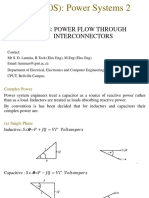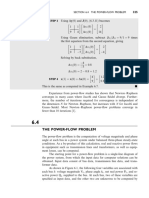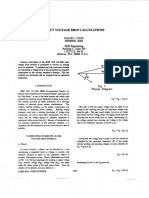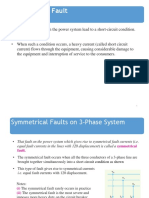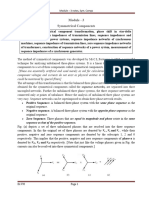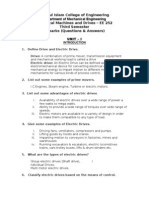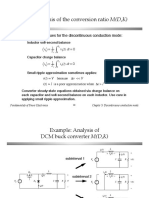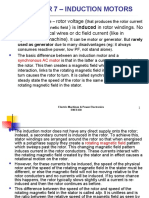0% found this document useful (0 votes)
280 views52 pagesLoad Part 2
Here are the steps to solve this problem:
1) Use the given kWh consumption for each customer to calculate their 15-minute maximum kW demand using the equation:
kWdemand = 0.2 + 0.008 * kWh
2) Sum the individual maximum kW demands for each transformer without considering the time of occurrence to get the noncoincident maximum demand.
3) The noncoincident maximum demand for each transformer is the diversified maximum demand.
4) Other information like load factor, diversity factor, etc. can also be calculated from the given data.
Let me know if you need help with any of the calculations. Solving this example will demonstrate the concepts of diversified, nondi
Uploaded by
Saleh AhmadCopyright
© © All Rights Reserved
We take content rights seriously. If you suspect this is your content, claim it here.
Available Formats
Download as PDF, TXT or read online on Scribd
0% found this document useful (0 votes)
280 views52 pagesLoad Part 2
Here are the steps to solve this problem:
1) Use the given kWh consumption for each customer to calculate their 15-minute maximum kW demand using the equation:
kWdemand = 0.2 + 0.008 * kWh
2) Sum the individual maximum kW demands for each transformer without considering the time of occurrence to get the noncoincident maximum demand.
3) The noncoincident maximum demand for each transformer is the diversified maximum demand.
4) Other information like load factor, diversity factor, etc. can also be calculated from the given data.
Let me know if you need help with any of the calculations. Solving this example will demonstrate the concepts of diversified, nondi
Uploaded by
Saleh AhmadCopyright
© © All Rights Reserved
We take content rights seriously. If you suspect this is your content, claim it here.
Available Formats
Download as PDF, TXT or read online on Scribd
/ 52






